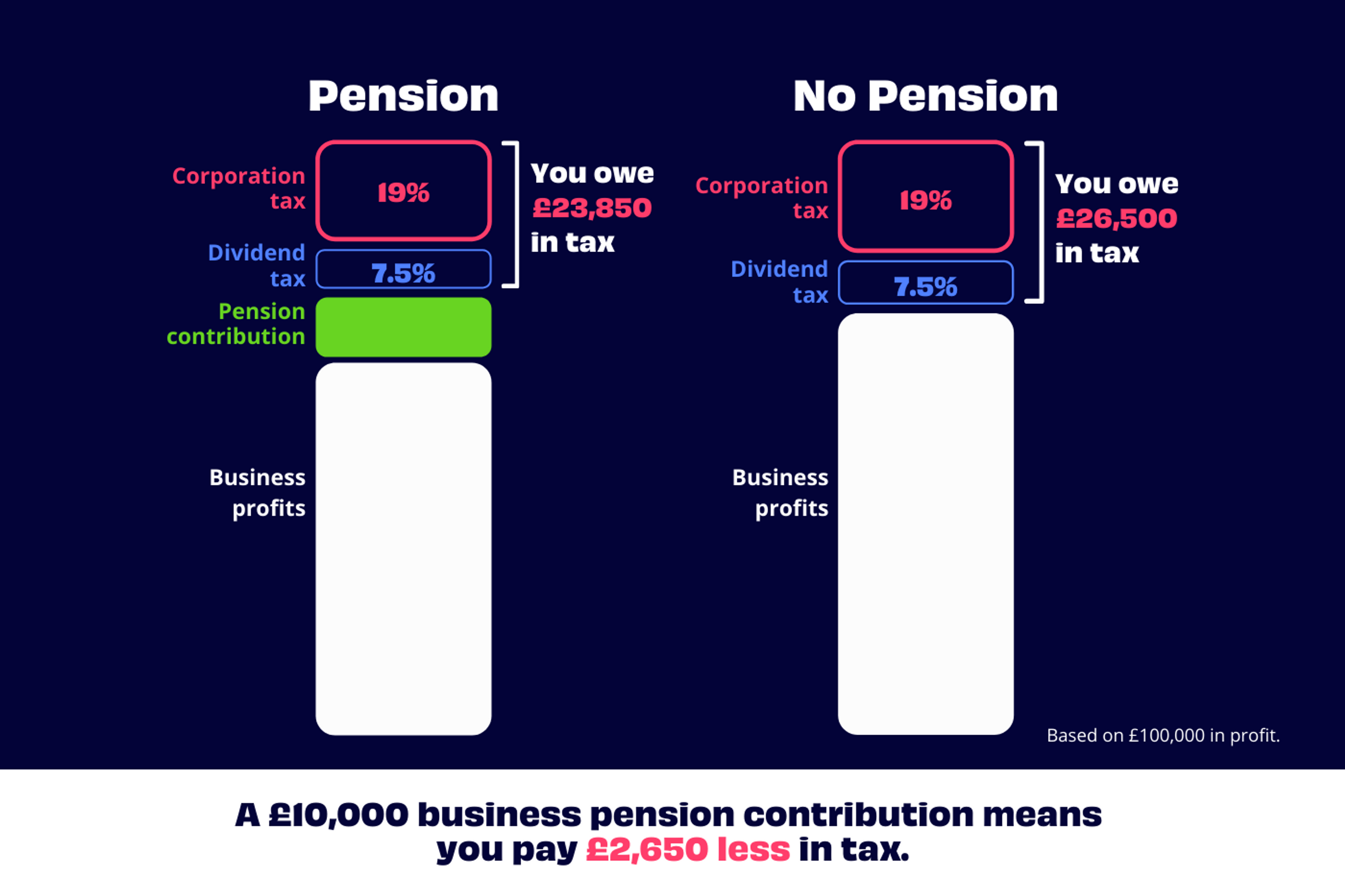Self employed pension tax relief explained
See what pension tax relief is and how it works for the self-employed, business contributions, how much can be paid in and more.
One of the biggest advantages of paying into your pension is tax relief. But when you work for yourself, it can be difficult to see what this means for you in real money terms. Is paying into your pension really worthwhile? In this article, we’ll break down exactly how self employed pension tax relief works in the UK.
What is pension tax relief for self employed?
The best way to think about tax relief on pension contributions is like a savings bonus from HMRC. The government wants to encourage the self employed to put money aside for later life. So, every time you pay into your pension, you’ll get a ‘tax bonus’ on your contributions.
For most people, this works out as 25% on top of whatever you pay in. Contribute £100 into your pension, the government will automatically add £25 themselves via tax relief. If you're a higher earner, you may be able to claim even more back.
At its most basic, tax relief is essentially a reduction in your tax bill for the year - and your pension is one of the best ways to claim it. Let's take a look at how this actually works.
How does tax relief on pension contributions work for the self employed?
For most people, claiming this tax relief on your pension is fairly straightforward. If you’re a basic rate taxpayer, you pay 20% income tax on everything you earn above the personal allowance (£12,570). However, putting that money in your pension means you get refunded on the tax you already paid.
Here’s the best way to think about it. Whenever you pay into your pension, you'll get a 25% bonus on top of however much you paid in. We think it's a little clearer to refer to it as a "25% bonus" rather than "20% tax relief". It’s a little complicated, but here’s why.
Let’s use a £100 pension contribution as an example again. If you’re a basic rate taxpayer paying 20% income tax, £125 in your pocket becomes £100 after you pay tax. That’s because 20% of £125 is £25. £125-£25=£100. Easy.
When you come to put this money into your pension, you're getting the income tax you originally owed back. To make you whole, the government adds the difference back into your pension for you. Voila, a £100 pension contribution becomes £125 once again.

The more you contribute, the more tax you’ll save. Here’s what this can look like over a year.

Here’s a simple way to think about it: for every £50 a month you pay into your pension, you’ll get an extra £150 back in self employed pension tax relief over the year. And here’s the best part: if you’re a higher (or additional) rate taxpayer, you can enjoy even more back from tax relief. Read on for more on that.

Pension tax relief for high self employed earners
Higher and additional rate self employed taxpayers get extra tax relief on their pension contributions. You’ll have already received 25% extra on your pension contributions just by paying in.
However, you can claim back a further 20% (25% if you’re an additional rate taxpayer) yourself. The best part? This extra relief doesn’t even have to go into your pension.
There is a catch however. Unlike basic rate relief, your pension provider won’t automatically add this to your pension for you. You’ll need to claim it back by adding your pension contributions to a self-assessment tax return. You’ll also be limited by your annual pension allowance. Check out our guide on claiming higher rate tax relief for more.
For every £50 you add to your monthly pension contributions, you’ll get an extra £150 back in yearly tax relief.
What about business contributions?
If you’re a limited company director paying into a directors pension from your business account, your tax relief will work a little differently. You’ll still receive tax relief at your marginal tax rate (depending on which tax band you fall in), but you’ll also save on corporation tax.
That’s because your pension contributions are a business expense - coming from your company rather than you as an individual. You can take your contributions off your total profits, therefore reducing the overall amount of profit you owe tax on.
Similarly, as your contributions come from your pre-tax income, you’ll also reduce your National Insurance contributions, helping you to keep more of what you earn.

How much can I pay in?
There is a limit on how much you can contribute each year and still benefit from self employed pension tax relief. Currently £60,000 (or 100% of your yearly income, whichever is lower). This applies whether you’re contributing as an individual or via your company.
There are a few other situations that could change how much you can pay in - go read our guides to pension limits and carrying forward previous years allowances for more.
How to set up your self employed pension
Ready to take control of your financial future? Penfold is the perfect pension for the self employed and limited company directors. Here’s why.
- Set up in five minutes
- Top up, pause or adjust your contributions anytime
- Automatic 25% tax relief bonus
- Choose from four diversified plans from the biggest money manager on the planet
A Penfold pension helps you keep more of what you earn and secure your financial future. Learn more about our award-winning pension today.